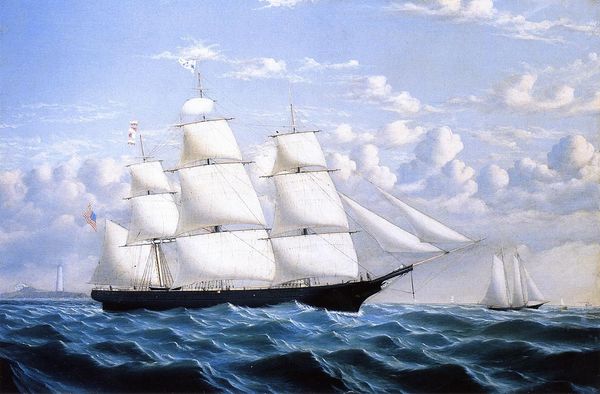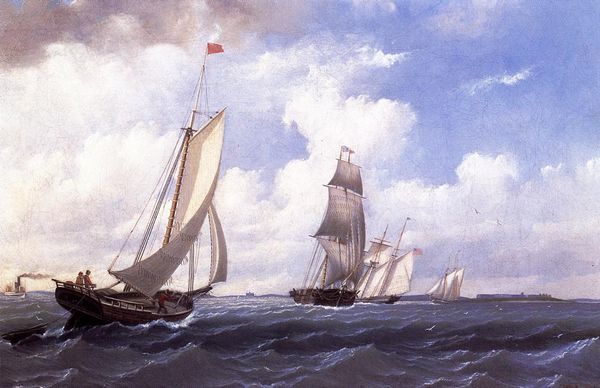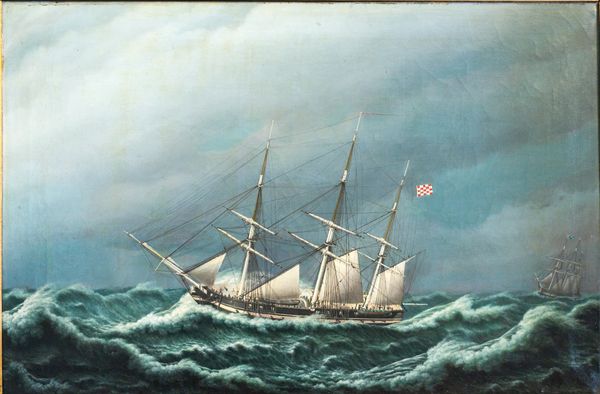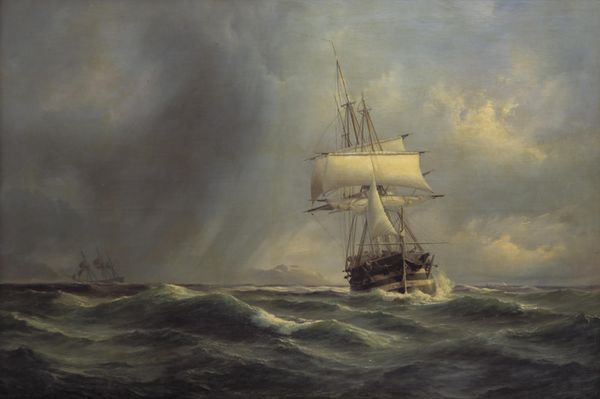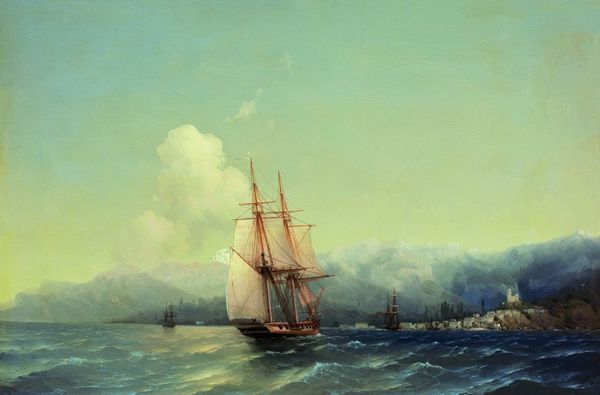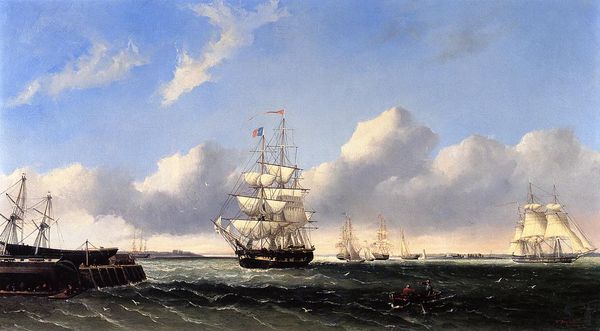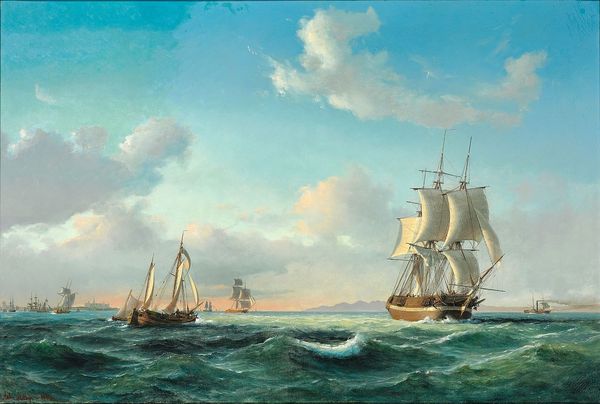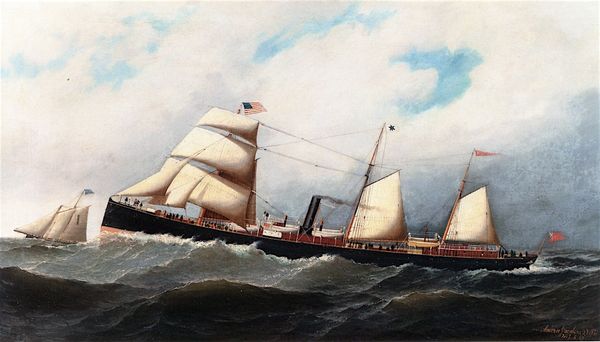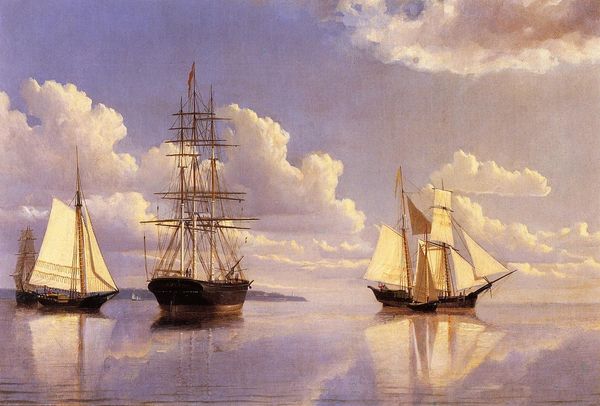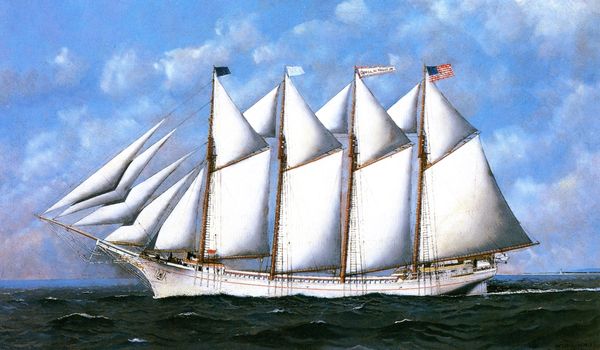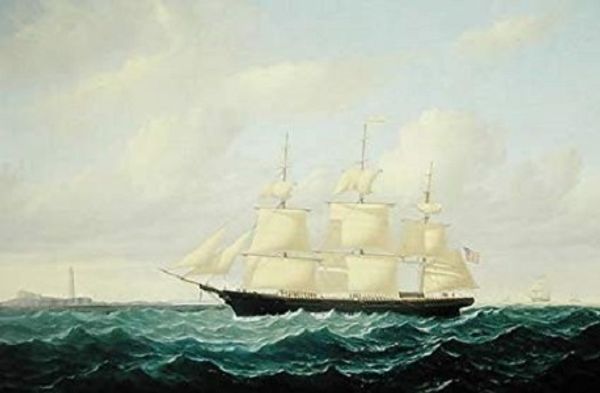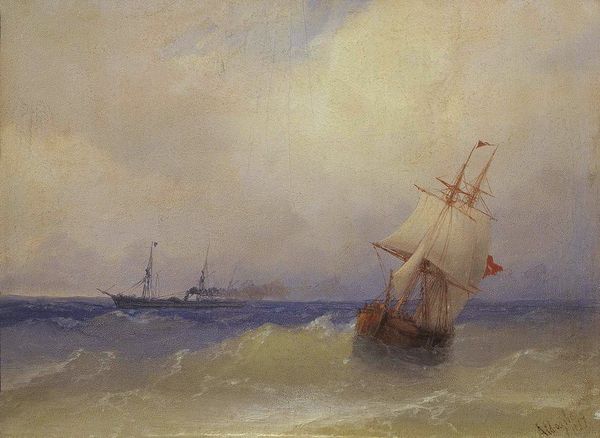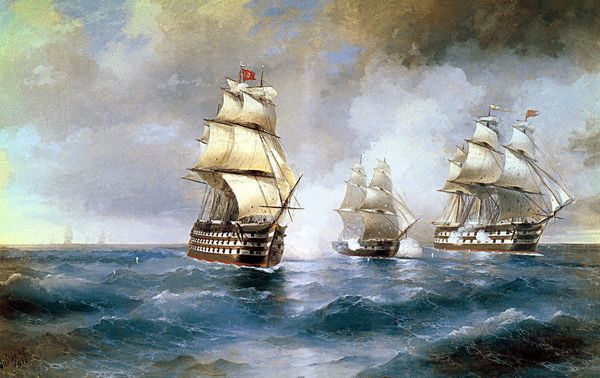
Copyright: Public domain
Editor: This is William Bradford’s oil painting, “Clipper Ship ‘Golden West’ of Boston, Outward Bound,” from 1853. It strikes me as a romanticized vision of maritime travel, very serene, despite the implied power and force of the ship. What do you see in this piece, beyond just a ship at sea? Curator: I see more than just a portrait of a vessel; I see a narrative steeped in the complex history of maritime trade and American expansion. Clipper ships like the 'Golden West' were instrumental in globalizing economies but at what cost? We need to question whose prosperity was being facilitated by these ships. Consider the legacy of colonialism, and the transport of goods – and people – that underpinned so much of this era. Do you see any tension in the image between progress and exploitation? Editor: That's a really interesting point. I hadn't considered the darker side of the ship’s purpose. The painting certainly idealizes the scene. The fluffy clouds and calm waters seem to suggest an uncomplicated journey. Curator: Exactly. Bradford presents us with an idyllic picture, which is in direct conflict with reality. As viewers, we have to engage critically. Who benefited from these voyages? What was being transported, and at whose expense? How does this image perpetuate a romanticized view of a more problematic historical context? Editor: It definitely encourages a different way of seeing the painting. It makes you consider what isn't being shown and the implications of that. Curator: Thinking critically about whose stories get told and how, challenges the historical narrative. It helps us become more conscious and aware viewers of not just art, but the world around us. Editor: I see it now. Thanks!
Comments
No comments
Be the first to comment and join the conversation on the ultimate creative platform.
